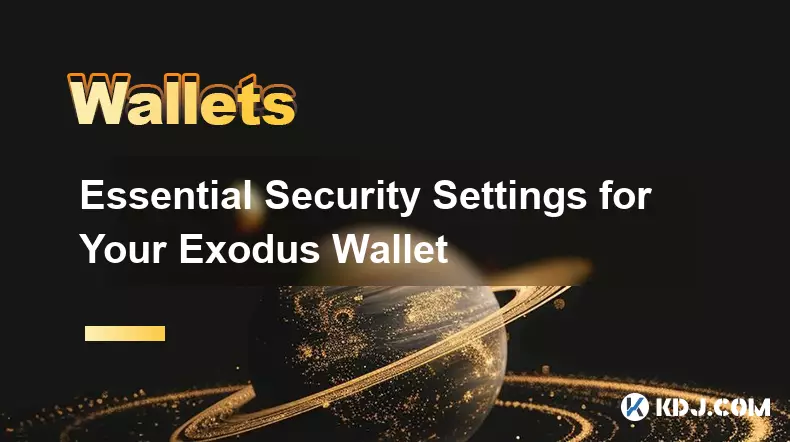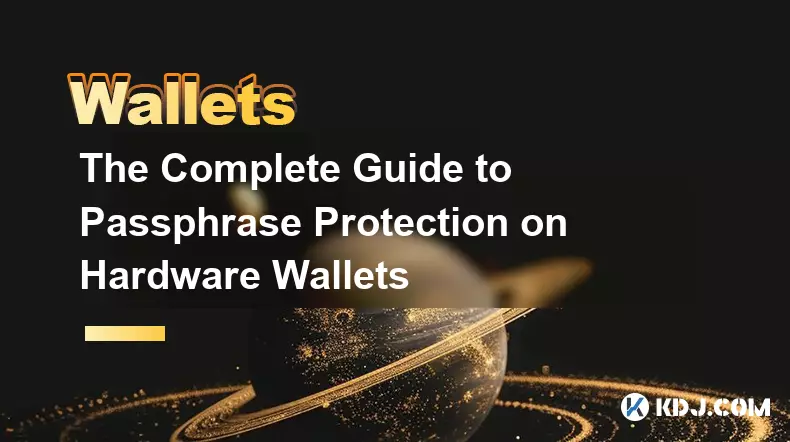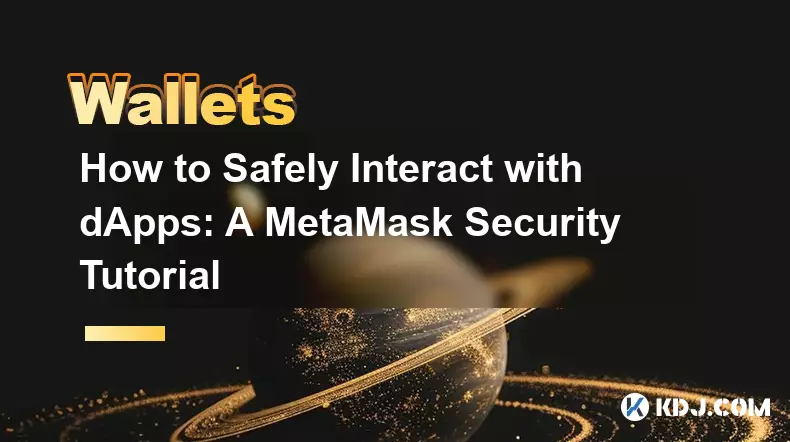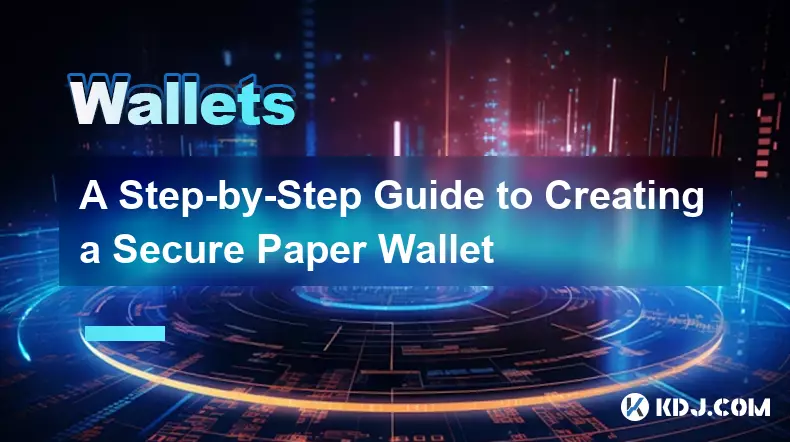-
 bitcoin
bitcoin $99177.955738 USD
-7.32% -
 ethereum
ethereum $3187.183061 USD
-12.38% -
 tether
tether $0.999809 USD
0.00% -
 xrp
xrp $2.117933 USD
-9.42% -
 bnb
bnb $906.710033 USD
-9.17% -
 solana
solana $149.367737 USD
-10.74% -
 usd-coin
usd-coin $0.999816 USD
0.01% -
 tron
tron $0.281498 USD
-0.38% -
 dogecoin
dogecoin $0.156292 USD
-8.00% -
 cardano
cardano $0.500744 USD
-10.19% -
 hyperliquid
hyperliquid $38.087358 USD
-4.58% -
 chainlink
chainlink $14.097831 USD
-8.54% -
 bitcoin-cash
bitcoin-cash $463.329916 USD
-9.22% -
 ethena-usde
ethena-usde $0.999078 USD
-0.01% -
 unus-sed-leo
unus-sed-leo $9.475862 USD
-0.79%
Hot Wallet vs. Cold Wallet: A Deep Dive into Security Differences
Hot wallets offer convenience for frequent transactions but are vulnerable to cyber threats, while cold wallets provide enhanced security through offline storage, ideal for long-term holdings.
Nov 02, 2025 at 12:54 am

Understanding Hot Wallets and Their Operational Nature
1. Hot wallets are digital cryptocurrency wallets that remain constantly connected to the internet, making them highly accessible for frequent transactions. These wallets are typically offered by exchanges or third-party platforms and include web-based interfaces, mobile apps, and desktop software.
2. The primary advantage of a hot wallet lies in its convenience. Users can send, receive, and manage their digital assets instantly, which makes them ideal for traders and individuals engaging in regular crypto activity.
3. However, this constant connectivity exposes hot wallets to a broader range of cyber threats. Phishing attacks, malware, and server breaches are common risks associated with online storage solutions.
4. Many hot wallets rely on centralized infrastructure, meaning private keys may be held by a third party. This introduces counterparty risk—if the service provider is compromised, user funds could be at immediate risk.
5. Despite these vulnerabilities, some hot wallets implement strong encryption, two-factor authentication (2FA), and multi-signature protocols to enhance security and reduce the likelihood of unauthorized access.
Cold Wallets: Isolation as a Security Advantage
1. Cold wallets operate offline, completely disconnected from the internet, which drastically reduces exposure to remote hacking attempts. These include hardware wallets like USB-like devices and paper wallets containing printed public and private keys.
2. Because they are not perpetually online, cold wallets are considered one of the most secure methods for storing large amounts of cryptocurrency over extended periods.
3. Transactions from a cold wallet require physical interaction—such as connecting a hardware device to a computer or manually entering a private key—which adds an essential layer of control and verification.
4. The offline nature prevents real-time exploitation by hackers, even if the connected device has been compromised. The signing process occurs within the isolated environment of the cold wallet itself.
5. Cold wallets eliminate the risk of remote digital theft, making them the preferred choice for long-term holders and high-net-worth investors. They do not depend on continuous network availability, reducing dependency on external server integrity.
Comparative Risk Exposure in Real-World Scenarios
1. In 2014, the Mt. Gox exchange suffered a massive breach where approximately 850,000 BTC were stolen—largely due to poor management of hot wallet security and inadequate segregation between online and offline storage systems.
2. More recently, several DeFi platforms have experienced flash loan attacks combined with smart contract exploits, where attacker bots drained funds directly from connected hot wallets integrated into vulnerable protocols.
3. On the other hand, documented cases of cold wallet theft usually involve physical tampering, social engineering, or user error—such as losing a hardware device without backup or exposing a recovery seed.
4. While cold wallets protect against remote attacks, they are not immune to compromise. Malicious firmware updates or supply chain attacks during manufacturing can embed backdoors in hardware models before they reach users.
5. The greatest vulnerability in both systems often stems from human behavior rather than technological flaws—misconfigured settings, weak passwords, or accidental disclosure of seed phrases remain leading causes of loss.
Best Practices for Managing Both Wallet Types
1. Users should adopt a tiered approach: keep only the funds needed for daily transactions in a hot wallet, while storing the majority of assets in cold storage.
2. Regularly update firmware and software for both wallet types, especially for hardware wallets, to patch known vulnerabilities introduced by evolving attack vectors.
3. Enable all available security features such as PIN protection, biometric authentication, and multi-signature setups that require multiple approvals for transactions.
4. Store recovery seeds in fireproof and waterproof safes, never digitally, and avoid taking photos or saving them on cloud services susceptible to data leaks.
5. Always verify transaction details on the hardware wallet’s screen before confirming—this prevents man-in-the-middle attacks even if the host computer is compromised.
Frequently Asked Questions
Can a cold wallet be hacked remotely?No, a properly used cold wallet cannot be hacked remotely because it does not connect to the internet. The private keys never leave the device, preventing online interception. However, physical access or tampering with the device before use can introduce risks.
Are mobile wallets always considered hot wallets?Yes, mobile wallets are classified as hot wallets since they operate on internet-connected devices. Even if encrypted, their persistent network access makes them more vulnerable compared to offline alternatives.
What happens if I lose my hardware wallet?If you lose your hardware wallet but have securely stored the recovery seed phrase, you can restore access to your funds on another compatible device. Without the seed, the assets are permanently inaccessible.
Is it safe to keep crypto on an exchange wallet?Exchange wallets are hot wallets controlled by third parties. While convenient, they carry higher risk due to potential platform insolvency, regulatory actions, or cyberattacks. It is generally safer to transfer holdings to personal cold storage after trading.
Disclaimer:info@kdj.com
The information provided is not trading advice. kdj.com does not assume any responsibility for any investments made based on the information provided in this article. Cryptocurrencies are highly volatile and it is highly recommended that you invest with caution after thorough research!
If you believe that the content used on this website infringes your copyright, please contact us immediately (info@kdj.com) and we will delete it promptly.
- Nano (XNO) Ignites: Volume Spike and Price Jump Signals Comeback?
- 2025-11-05 14:50:11
- Bitcoin's Bear Signal: Is a Collapse Incoming?
- 2025-11-05 14:40:15
- Nick Szabo, Bitcoin Future, and BTC: Navigating the Crypto Landscape in 2025
- 2025-11-05 14:50:01
- Bitcoin's Wild Ride: Saylor, Kiyosaki, and the Quest for $200K
- 2025-11-05 10:50:13
- Culex, Cardano, and Aster: A Crypto Cocktail of Mosquitoes, Dips, and CZ Fuel
- 2025-11-05 11:00:17
- Crypto Presales, Coin Growth, and Established Coins: Navigating the 2025 Buzz
- 2025-11-05 11:00:17
Related knowledge

Public vs. Private Keys: A Core Concept for Wallet Security
Nov 05,2025 at 03:18pm
Understanding Public and Private Keys in Cryptocurrency Wallets1. In the world of cryptocurrency, public and private keys form the foundation of walle...

Essential Security Settings for Your Exodus Wallet
Nov 05,2025 at 08:00am
Understanding Exodus Wallet Security Fundamentals1. Exodus is a software wallet that allows users to store, manage, and exchange various cryptocurrenc...

Reviewing Smart Contract Permissions: A Critical Security Step
Nov 01,2025 at 04:55pm
Understanding Decentralized Exchanges in the Crypto Ecosystem1. Decentralized exchanges (DEXs) have reshaped how traders interact with digital assets ...

The Complete Guide to Passphrase Protection on Hardware Wallets
Nov 03,2025 at 10:37am
Understanding Passphrases in Hardware Wallets1. A passphrase, often referred to as a 25th word, adds an additional layer of security beyond the standa...

How to Safely Interact with dApps: A MetaMask Security Tutorial
Nov 04,2025 at 02:54am
Understanding dApp Interaction Risks1. Decentralized applications (dApps) operate on blockchain networks, enabling users to trade tokens, lend assets,...

A Step-by-Step Guide to Creating a Secure Paper Wallet
Nov 05,2025 at 04:39am
Understanding the Basics of a Paper Wallet1. A paper wallet is a physical document that contains the private and public keys of a cryptocurrency addre...

Public vs. Private Keys: A Core Concept for Wallet Security
Nov 05,2025 at 03:18pm
Understanding Public and Private Keys in Cryptocurrency Wallets1. In the world of cryptocurrency, public and private keys form the foundation of walle...

Essential Security Settings for Your Exodus Wallet
Nov 05,2025 at 08:00am
Understanding Exodus Wallet Security Fundamentals1. Exodus is a software wallet that allows users to store, manage, and exchange various cryptocurrenc...

Reviewing Smart Contract Permissions: A Critical Security Step
Nov 01,2025 at 04:55pm
Understanding Decentralized Exchanges in the Crypto Ecosystem1. Decentralized exchanges (DEXs) have reshaped how traders interact with digital assets ...

The Complete Guide to Passphrase Protection on Hardware Wallets
Nov 03,2025 at 10:37am
Understanding Passphrases in Hardware Wallets1. A passphrase, often referred to as a 25th word, adds an additional layer of security beyond the standa...

How to Safely Interact with dApps: A MetaMask Security Tutorial
Nov 04,2025 at 02:54am
Understanding dApp Interaction Risks1. Decentralized applications (dApps) operate on blockchain networks, enabling users to trade tokens, lend assets,...

A Step-by-Step Guide to Creating a Secure Paper Wallet
Nov 05,2025 at 04:39am
Understanding the Basics of a Paper Wallet1. A paper wallet is a physical document that contains the private and public keys of a cryptocurrency addre...
See all articles










































































